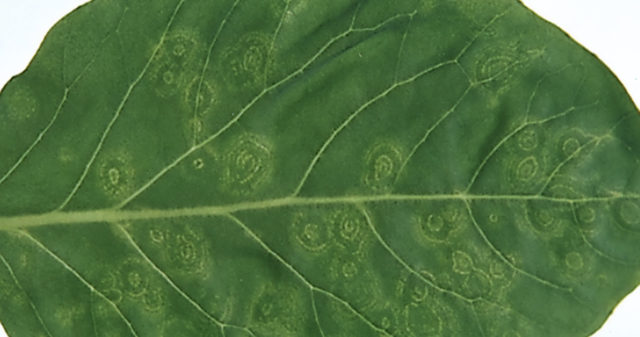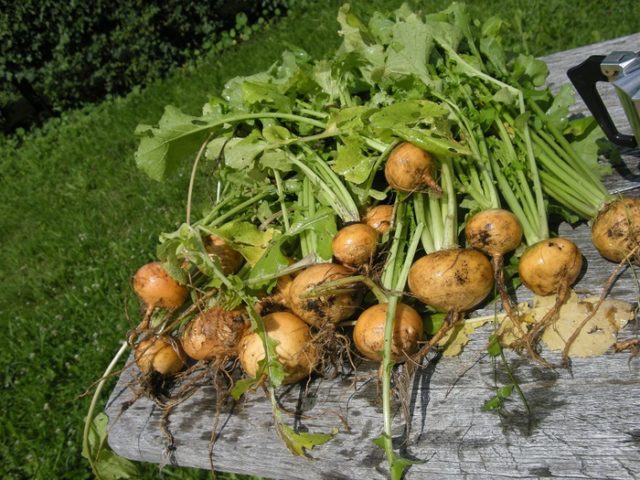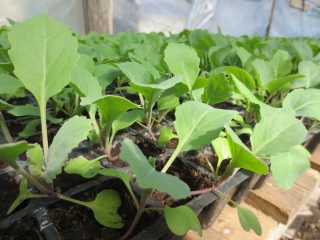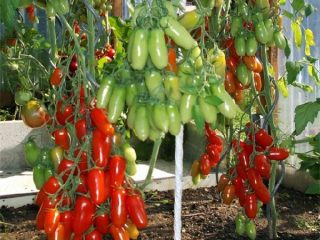Content
Turnip is the oldest cultivated plant. It was once regularly eaten and was part of the diet of representatives of various classes. Over time, the root crop was replaced by potatoes and undeservedly forgotten. But turnip is a unique product, recommended for children’s and dietary nutrition, low-calorie, rich in vitamins, antioxidants, micro- and macroelements. It has medicinal properties, serves to strengthen the immune system and prevent diseases of the respiratory and cardiovascular systems. The root vegetable contains substances with high anticancer activity. Turnip Petrovskaya is a popular, well-proven variety that is consistently in demand among lovers of this product and is highly valued by gardeners.
Turnip Petrovskaya in the photo:
History of selection
The turnip variety Petrovskaya 1 was bred in the 30s of the last century by breeders of the Gribov experimental station located in the Moscow region. In 1937, it was submitted to the commission for variety testing. Included in the State Register in 1950, approved for cultivation throughout Russia.The applicant organization was subsequently renamed the Federal Scientific Center for Vegetable Growing. The Petrovskaya variety is undemanding to soil composition and climatic conditions; its yield depends mainly on compliance with the rules of planting, cultivation and care.
Description of the turnip variety Petrovskaya 1
Turnip Petrovskaya 1 is a mid-early variety that ripens 60-84 days after planting. The root crop grows in a round or round-flattened shape, concave at the bottom, with a golden smooth skin. The pulp is yellow, juicy, hard, sweet. The average weight of the fruits of the Petrovskaya variety ranges from 60-150 g, but often exceeds 500 g. The rosette of the aerial part of the plant is appressed. The leaves are dissected, green, short. The upper lobes are large, oval, with 3-4 pairs of sparsely located lateral lobes and a small number of intermediate ligules. The petioles are green, thin, sometimes with shades of blue and purple.
Main characteristics of the variety
The Petrovskaya variety is an unpretentious and hardy crop, not afraid of cold and drought, grows and bears fruit in low light conditions.
Productivity
Turnip Petrovskaya 1 – high-yielding variety, from 1 m2receive an average of 1.5-4 kg of root vegetables. Short ripening times allow you to sow the plot twice per season. It does not require special care; in favorable conditions it bears fruit abundantly and amicably. The size and quality of the fruits depend on watering and fertilizers.
Sustainability
Turnip Petrovskaya 1 is tolerant of cold, but does not tolerate negative temperatures. Frozen fruits cannot be stored for long-term storage. The variety is resistant to heat, but insufficient watering negatively affects the appearance and taste of the fruit.
Advantages and disadvantages
Turnip Petrovskaya 1 is one of the oldest varieties of domestic selection. Popular among gardeners due to its characteristic distinctive characteristics:
- external attractiveness of the fruits - large, aligned, regular in shape, with golden skin;
- pleasant sweetish taste;
- high seed germination;
- shade-tolerant variety;
- excellent keeping quality;
- friendly harvest;
- resistance to clubroot and bloom.
When planting the Petrovskaya turnip variety, you should take into account some disadvantages:
- does not tolerate negative temperatures;
- During long-term storage, the taste of the fruit deteriorates.
The Petrovskaya 1 variety is intended for consumption fresh, steamed, and salted. Thanks to its rapid ripening, it can be on the table all summer and autumn. Turnips planted in mid-summer are harvested before the first frost and stored for winter storage.
Planting and caring for turnip Petrovskaya
Turnips of the Petrovskaya 1 variety are planted 2 times a season. In spring, seeds are sown immediately after the snow melts, as soon as the soil dries out and the danger of return frosts has passed. In summer - June-July. Petrovskaya turnips are planted directly into the ground without seedlings.
Petrovskaya 1 grows well in well-lit and ventilated areas. It is recommended to plant turnips in one place for no more than 2 years in a row. Legumes and nightshades will be good predecessors for the Petrovskaya variety.You cannot plant turnips after its closest relatives - cruciferous vegetables: cabbage, radish, daikon, radish. Turnip Petrovskaya prefers light, fertile, non-acidified soils - loams and sandstones with deep groundwater.
The site for Turnip Petrovskaya 1 should be prepared in the fall:
- enrich with humus at the rate of 2-3 kg of organic matter per 1 m2;
- apply mineral fertilizers - potassium, nitrogen, phosphate at the rate of 10 g of each type per 1 m22.
In the spring, the area is carefully dug up, plant debris is removed, leveled and rolled. Then make grooves 1-2 cm deep at a distance of 30 cm.
Before sowing, Petrovskaya turnip seeds are soaked in warm water, dried, mixed with sand, embedded in the ground and carefully watered. It is advisable to keep the bed under film until the shoots appear. Seeds germinate at a temperature of + 2-3 ˚С, for further development they require heat of + 15-18 ˚С.
Growing technology
Caring for turnip Petrovskaya does not require special knowledge or hassle. The main attention should be paid to regular loosening and removal of weeds. Petrovskaya turnip needs regular abundant watering, per 1 m2 it is necessary to consume 10 liters of water with a frequency of 2-3 times a week. Drip irrigation is preferred.
Within a week the first shoots will appear - they will be frequent. After 2-3 weeks, the crops need to be thinned out, leaving a distance of 3 cm between them. After another 2 weeks, thinning needs to be done again, increasing the distance between plants to 6-10 cm.
Due to the short growing season, Petrovskaya turnips do not need to be fed. In case of weak growth or yellowing of leaves, urea should be added (10-15 g/m2). Poor soils should be enriched: add complex fertilizers with a high boron content 2-3 times. This element is very important for the development of Petrovskaya turnips; if there is a shortage of it, voids are formed in the root crops, the pulp acquires an unpleasant taste, and keeping quality deteriorates.
Treatment against pests and diseases
Turnip Petrovskaya is affected by diseases characteristic of all cruciferous plants. The most common is clubroot, which affects the root system. The variety is resistant to this disease, but infection is possible if the soil is highly acidic or the infection persists in the soil after the predecessor plants. Treatment consists of removing diseased plants and treating the soil and healthy turnips with solutions of potassium permanganate, ash, and lime milk. An effective control measure is to water the soil with horseradish infusion (400 g of leaves and roots, pour 10 liters of water and leave for 4 hours).
With high humidity, Petrovskaya turnip is susceptible to fungal diseases - white and gray rot, powdery mildew of cruciferous vegetables, downy mildew, and blackleg. Treatment – treatment of plants with Bordeaux mixture or fungicides “Skor”, “Previkur”, “Switch”, “Vectra”.
A viral disease, radish mosaic, cannot be treated. The only remedy is to remove diseased plants. Disease prevention is achieved by following the rules of agricultural technology and crop rotation, adequate nutrition and watering, which ensure high immunity of Petrovskaya turnips.
Juicy root vegetables also attract pests:
- cabbage butterfly larvae;
- cruciferous flea beetle;
- white turnip;
- spring and summer cabbage flies;
- stem nematode;
- wireworm;
- garden scoop;
- cabbage scoop.
The most effective way to combat them is to treat plants and soil with insecticides “Evrodim”, “Akiba”, “Aktara”, “Tabu”, “Prestige”, “Aktellik”. Folk remedies include spraying with tobacco solution and onion infusion. When using chemistry, it should be remembered that treatment can be carried out no later than a month before harvest.
Conclusion
Turnip Petrovskaya is an unpretentious, undemanding plant. Fans of this traditional product of Russian cuisine appreciate the variety for its attractive appearance and harmonious taste of the fruit. Gardeners in their reviews of Petrovskaya turnips emphasize such advantages of the crop as high productivity, ease of cultivation and early ripening. Beginners who decide to grow the Petrovskaya variety for the first time will receive only positive emotions from the process and the result.














